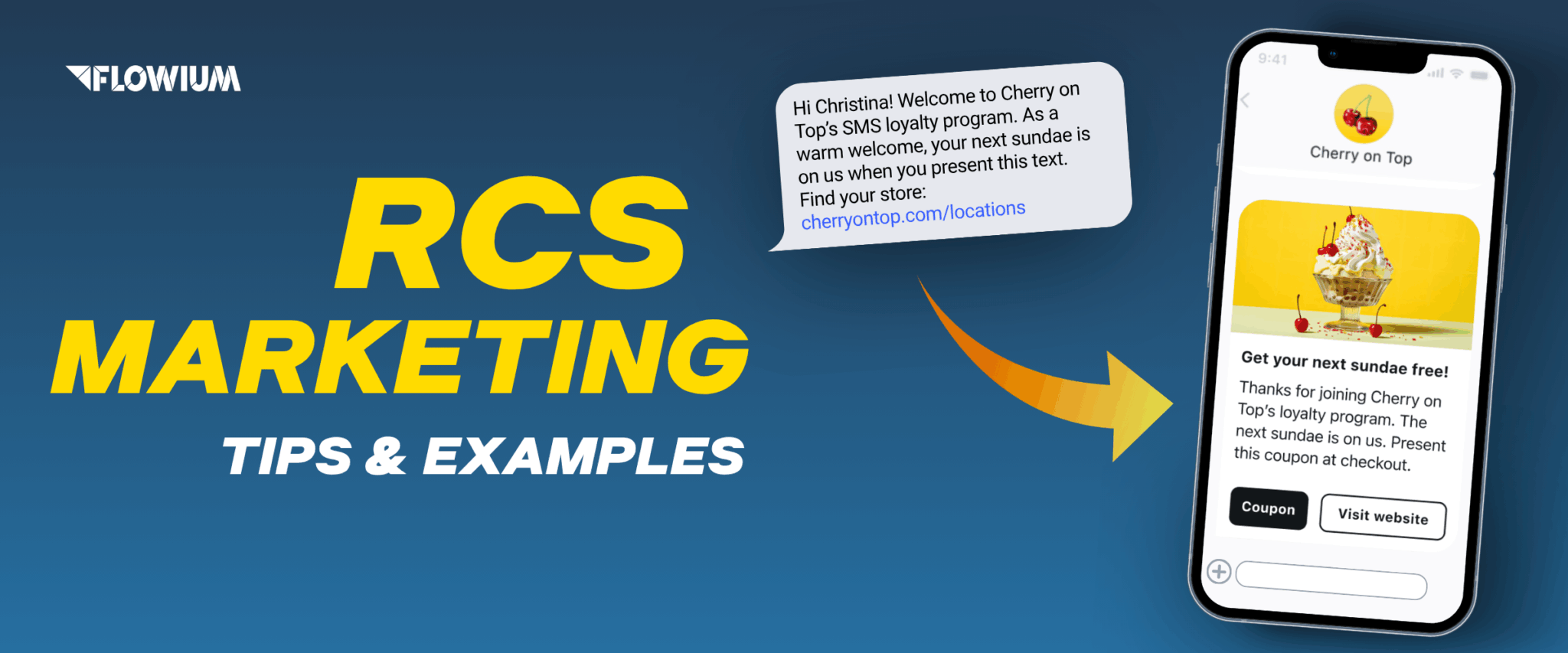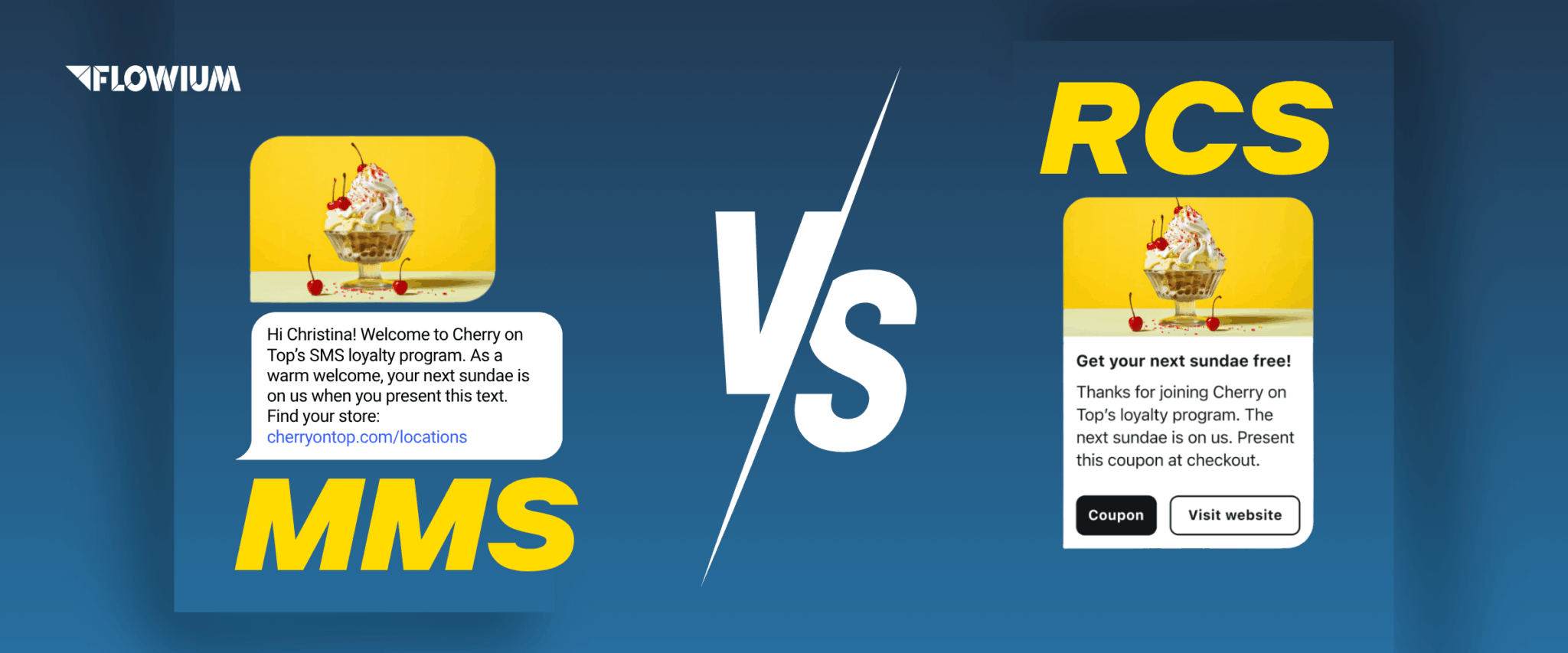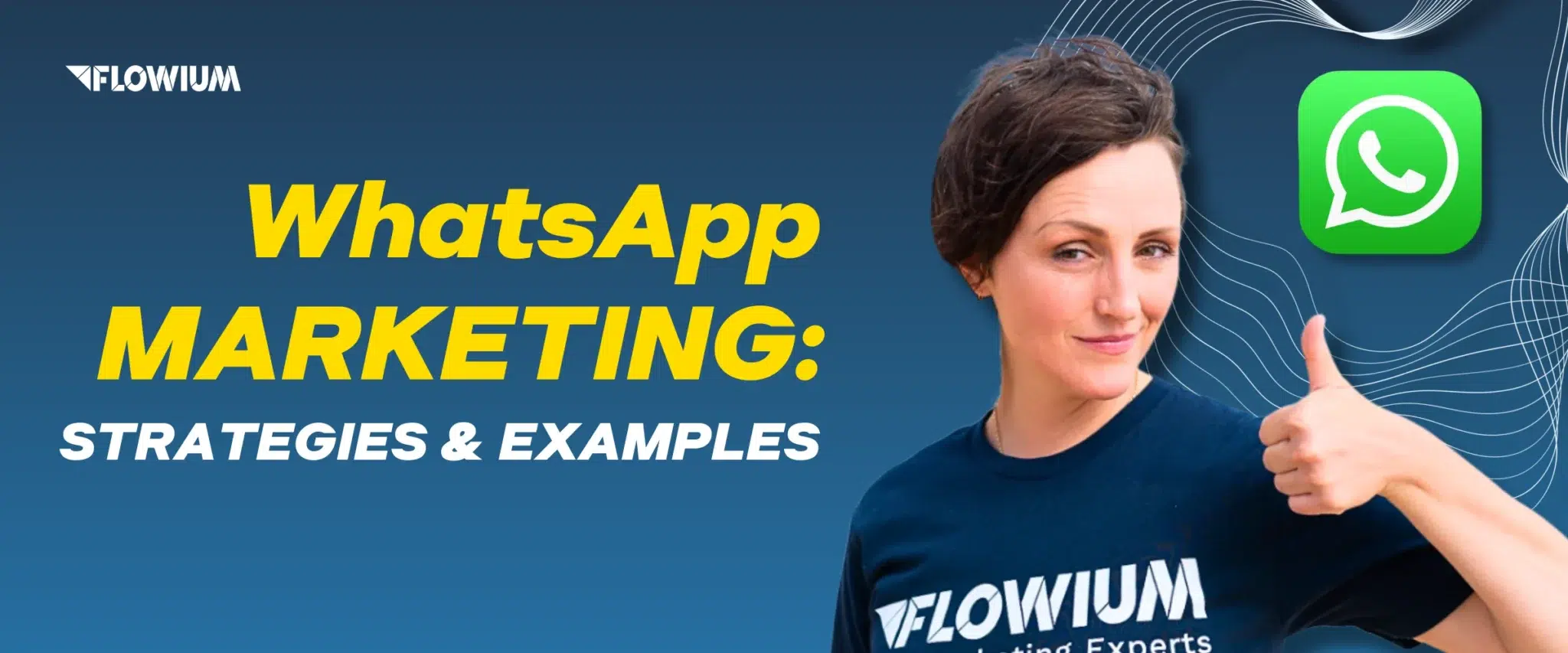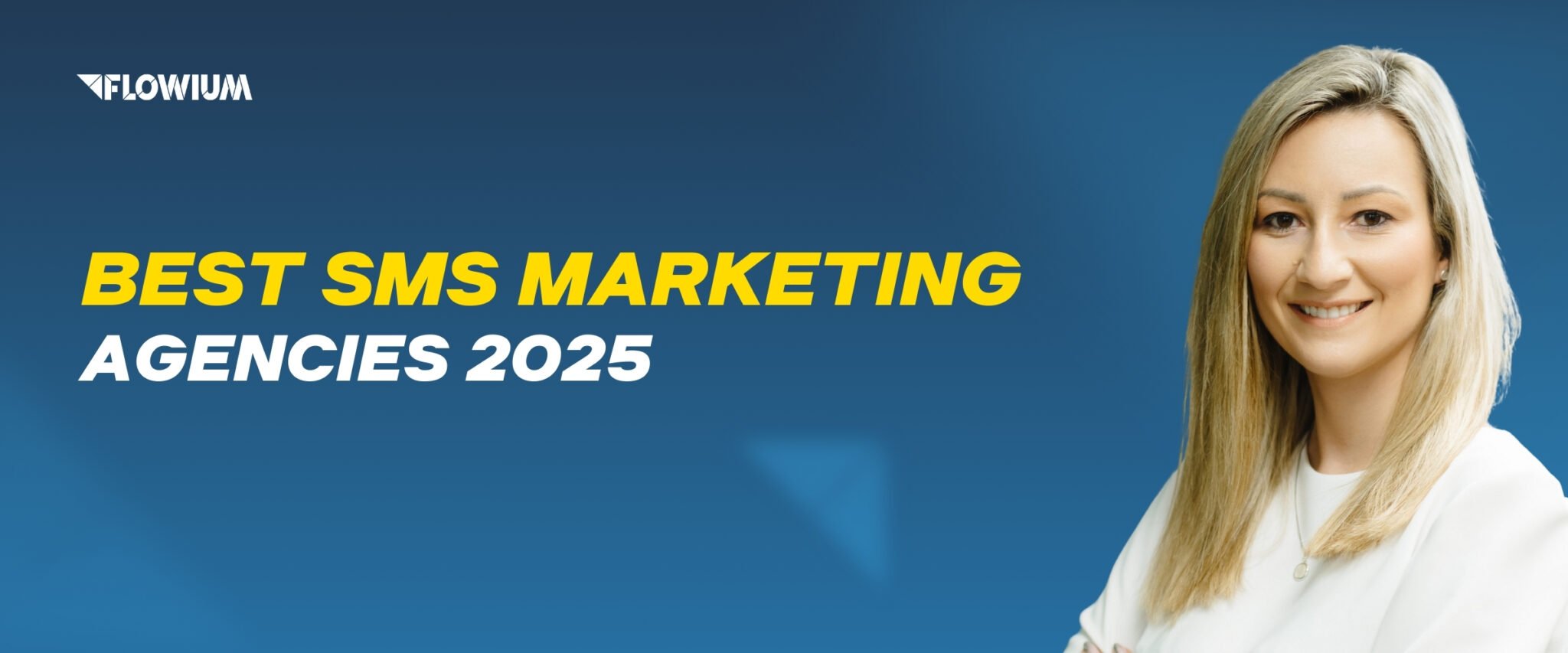While text message marketing is on the rise, marketers search for more innovative technologies that can increase the efficiency and success of promotions on this channel. One of the most recent developments in this sphere is the popularization of RCS marketing. While the technology itself isn’t that new, it came into focus after Apple rolled out its iOS 18 with RCS support, joining Samsung and Android that had it earlier.
In this article, we’ll look into the most effective methods of implementing RCS in marketing strategies. Read ahead to learn about the best practices recommended by our SMS marketing specialists and see prominent examples.
What is RCS Marketing?
Let’s set the stage first. RCS (Rich Communication Services) is a new messaging protocol comparable to SMS or MMS, but with more interactive elements and a much richer, more visual experience.
RCS appears and feels like an authentic interaction between your brand and its customers. It gives you more opportunity to express your brand voice and create engaging, memorable consumer experiences.
Google developed the RCS (Rich Communication Services) standard to transport rich, interactive messages from verified senders across carrier networks and Wi-Fi.
RCS allows you to send:
- Documents, GIFs, and pictures
- CTA (such as “Order Now,” “Check In”)
- Carousels of content that can be swiped
- Messages with branding elements
All of this takes place within your phone’s built-in messaging software. RCS does not require a separate app, in contrast to WhatsApp. Since it’s integrated into the default SMS app, it’s a big improvement, particularly in the US and Canada, where WhatsApp isn’t very popular.
RCS, to put it briefly, is the first messaging channel to integrate global reach, branded capabilities, and rich features into the primary messaging app.
How RCS Messaging Works
- RCS Agent Creation
To develop a verified RCS agent, a brand provides its information to a third-party platform. profile. By doing this, the brand identification is guaranteed to be correctly registered and usable on all supported networks.
- Google Environment
The agent is developed for approval and validation inside the Google Business Messaging environment. Google verifies the profile’s correctness, branding, and adherence to its rules. 3.
- Carrier Clearance
Before being made available to consumers, the agent is sent to cell carriers for clearance. Carriers confirm that the agent complies with regional security regulations.
- Customer Interaction
Once live, customers’ messaging apps can receive rich, interactive RCS messages from the brand, enabling them to engage with captivating content. Consumers gain from interactions that are more personal, media-rich, and trustworthy than typical SMS.
Types of RCS Marketing Messages
Businesses can choose from a variety of RCS messaging formats, and top brands are already utilizing them to increase engagement and revenue.
- Basic Messages
Similar to SMS, basic messages are the most basic form of RCS messaging. They are 160 characters long and contain text and URL previews. The message defaults to SMS if the recipient’s device does not support RCS, and they originate from a verified sender profile.
- Single Rich Messages
By incorporating rich content such as buttons, cards, carousels, photos, and longer text, single rich messages surpass basic ones. Additionally, these originate from verified, branded profiles, guaranteeing receivers’ credibility and trust.
- Conversational Messages
Conversational RCS for Business enables real-time, two-way communication via user-initiated (P2A) and brand-initiated (A2P) discussions. While P2A starts when customers contact businesses on their own, A2P starts when customers respond within 24 hours, providing brands with important chances for individualized support.
RCS Marketing vs SMS/MMS Promotions
While all three of these types make up text message marketing, they have substantial differences that businesses need to consider before choosing the promotional strategy. Starting from the definition, let’s look at these differences.
- Short Message Service, or SMS, is a simple text message format that is transmitted via carrier networks. SMS has a 160-character limit per message and excludes other media.
- Multimedia Messaging Service, or MMS, is transmitted via carrier networks and can contain longer texts, GIFs, and photos.
- We’ve already established that Rich Communication Services is a message type enabling the transmission of read receipts, interactive buttons, brand verification, and high-resolution media via Wi-Fi or cellular data.
Even visually, they’re easy to recognize and differentiate from one another thanks to their distinguishing features.
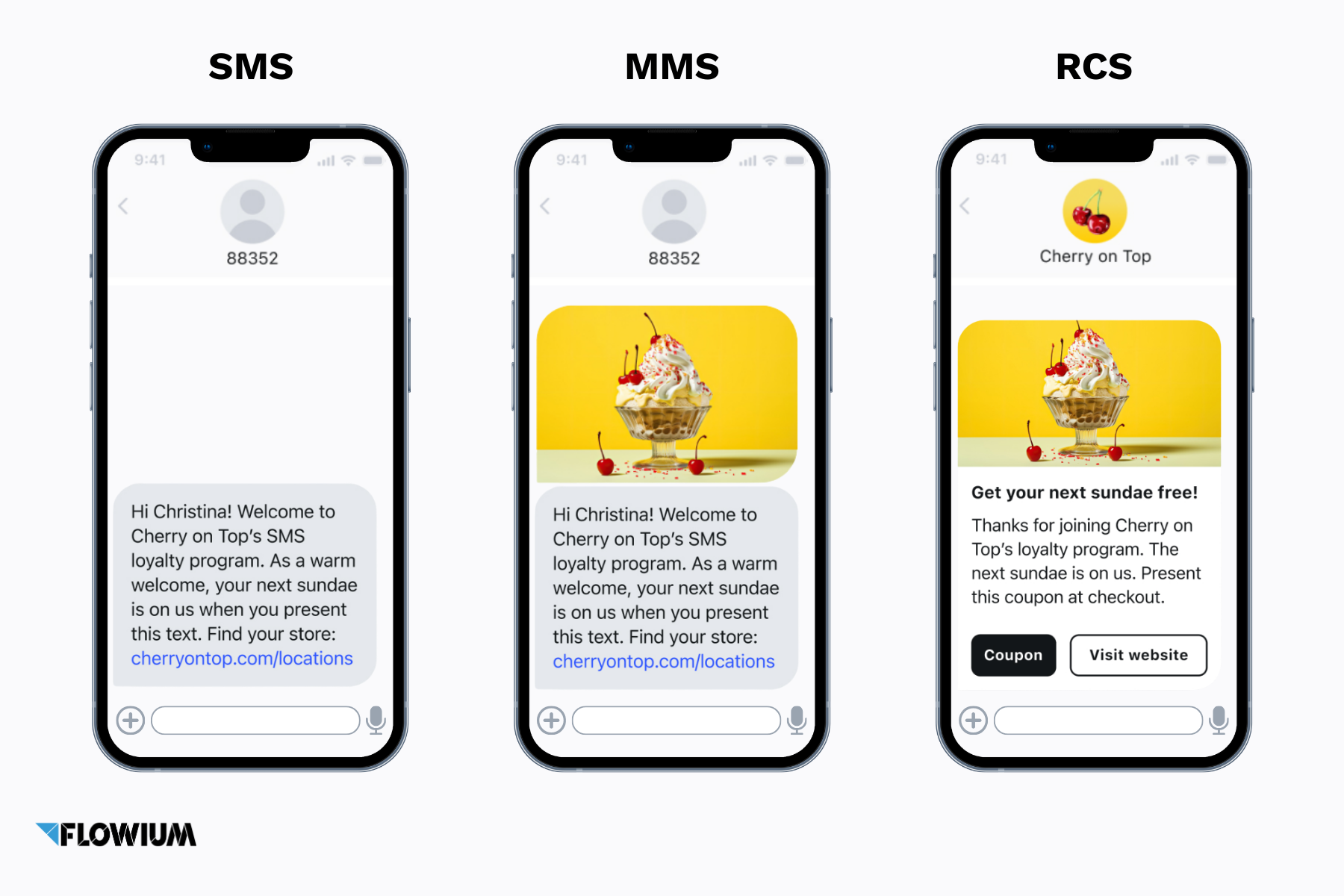
When compared with SMS and MMS, RCS is more interactive and personalized. In order to create consistent, channel-agnostic journeys that meet your customers wherever they are, RCS works best when combined with email, push, social media, and mobile app messaging as part of your omnichannel strategy. Let’s break down some more features to compare these types of message formats.
| Feature | RCS | SMS | MMS |
|---|---|---|---|
| Content | Text, images, videos, buttons, carousels, branding, location, suggested replies | Text (up to 160 characters) | Text and multimedia, like images, video, and audio (limited size) |
| File Size | Up to about 100MB | 160 characters of text | Usually around 300KB |
| Branding | Logos, custom colors, verified sender IDs | Not supported | Not supported |
| Interractivity | High-level (interactive buttons, chatbots, rich cards, click-to-call) | None | Viewing media only |
| Reach | Limited (depends on the device support) | Unlimited | Universal but with limited media quality |
| QR Code Support | Yes | No | No |
| Encryption | Yes | No | No |
| Cost for businesses | Higher than SMS/MMS but offers increased engagement and ROI | Lowest cost | Higher than SMS (usually charged per message) |
Top RCS Messaging Features for Marketing
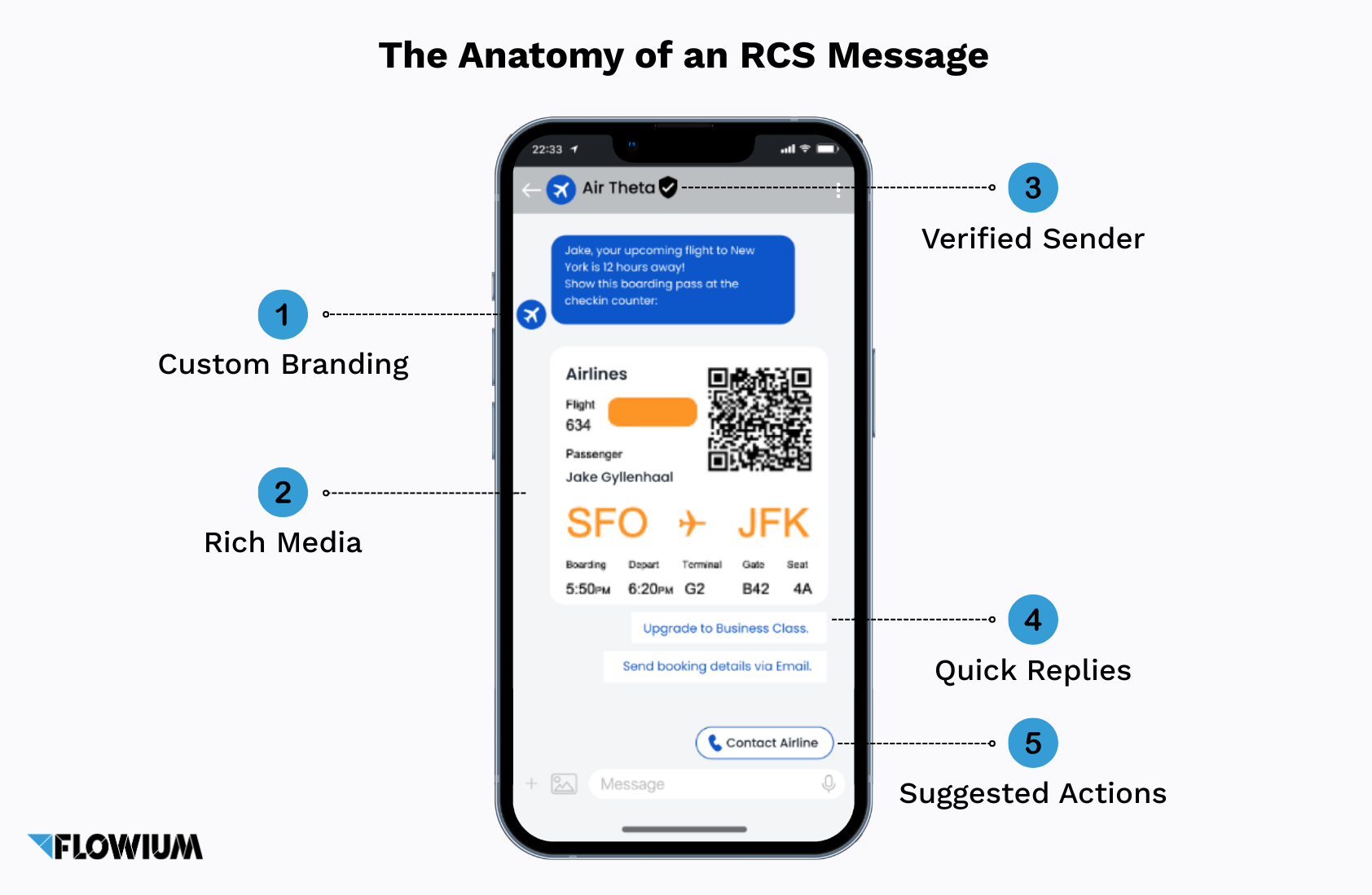
1. Rich Media
Purpose: Busting conversions
High-resolution pictures, movies, GIFs, and audio files can all be shown immediately in the message thread with RCS. Instead of restricting promotions to text, you can now offer rich, high-converting content.
2. Interactive Elements
Purpose: Using personalization to motivate action
Carousels, rapid answers, and CTA buttons turn passive messages into an engaging dialogue that increases conversions. To increase conversions, you could, for instance, utilize an image carousel and a “shop now” button to announce the release of a new product. To simplify the process for clients, you can also create personalized rapid responses that accurately reflect their preferences.
3. Verification for Businesses
Purpose: Fostering trust
A verified badge, brand logo, and company details are all included in every RCS business profile, fostering instant identification and confidence. Customers are less likely to confuse legitimate emails for spam because this verification is clearly visible with every message.
4. Improved Analytics
Purpose: Gaining insight and a deeper understanding
Real-time information on how customers interact with your messaging can be obtained through read receipts and typing indicators. RCS is able to inform you precisely when your customers see your messages and whether they are actively participating, unlike SMS.
5. Increased Throughput
Purpose: Faster reach
Compared to standard SMS, RCS offers higher throughput and faster delivery speeds because it runs on IP-based data networks (LTE, 5G, or Wi-Fi). This implies that even during moments of heavy sending volume, your time-sensitive communications can reach clients more quickly.
6. Suggested Actions
Purpose: Seamless user experience
The unique part of RCS is the ability to add menus with suggested actions. Instead of typing, customers can engage with a single tap. For example, collecting subscriber preferences in SMS usually requires typing responses or linking to a web form, which can interrupt the experience. With RCS, customers just click a button, making the interaction feel more authentic and frictionless. Suggested reply buttons are customizable to fit each brand’s flow. RCS also offers built-in actions such as:
- Tap to Call – Call a store directly.
- Share My Location – Show nearby store locations.
- View Location – Get directions on a map.
- Add to Calendar – Save in-store events or openings.
7. Carousels and Product Discovery
Purpose: Effective product showcase within messages
With RCS, brands can present a carousel of rich cards that customers scroll through. Unlike SMS, which is limited to text and a URL, RCS enables the inclusion of product images, descriptions, prices, and other details directly within the message. This mirrors what customers already see on social media or websites, but now it happens in their native messaging app. Suggested action buttons make it easy to take the next step, such as adding a product to their cart.
Benefits of Business RCS Marketing
Now that both main operating systems enable RCS, companies can reach nearly all smartphone users with these improved messaging experiences. This broad reach elevates RCS to the status of a next-generation customer interaction platform.
- Content Control and Reach
Brands have total control over the type of content that their customers see because of RCS. It combines the immediate reach of SMS with the effectiveness of email marketing. Additionally, the message automatically switches back to SMS or MMS if a customer’s phone does not support RCS, guaranteeing universal reach.
- Enhanced Personalization and Targeting
RCS enables customized content experiences according to user information and actions.
It is possible to push dynamic information in real time, including order status or shipping alerts.
Using branching logic, conversational flows can be tailored to help users navigate.
- Better Interactivity and Experience
Messages can resemble miniature websites, replete with action buttons, images, and interactive elements. Brands can instantaneously provide rich media experiences, airlines can offer travel details, and retailers may display merchandise via swipeable carousels.
- Analytics and Insights
Real-time engagement data is an additional advantage. RCS campaigns offer insights on par with web or email campaigns.
- Building Trust and Branding
Verified sender IDs lower the danger of spam and increase consumer trust. Campaigns that use rich branding components (headers, colors, and logos) are visually consistent with the brand identity. Instead of using unknown shortcodes, customers communicate through a reliable channel.
- Fewer Compliance Issues
RCS simplifies the opt-out process for consumers without requiring brands to use character-intensive “Text STOP to unsubscribe” text. A more user-friendly RCS opt-out procedure can enhance the client experience while streamlining adherence to different state-level laws.
Shortcomings of RCS Marketing for Ecommerce Businesses
- Inconsistent User Experience
It is more difficult to standardize advertisements when features like carousels and payments operate differently depending on the locale, carrier, or device.
- Location-based Limitations
RCS performs best in places where carriers and Google actively support it; nonetheless, global discrepancies, Apple’s sluggish adoption, and legal restrictions create location-based constraints.
- Dependency on the Internet Connection
Since RCS needs data or Wi-Fi, unlike SMS, delivery may not be dependable in places with inadequate connectivity.
- Business Costs and Complexity
Unlike regular SMS, running RCS campaigns requires more technical setup and fees from CPaaS suppliers.
- Limitations of Analytics
Although RCS offers engagement data, its analytics ecosystem is still in its infancy when compared to more well-known ad platforms.
RCS Direct Marketing Use Cases
You can automate customized conversations with RCS chatbots, offering prompt answers and assisting clients with their questions. You can maintain the conversation’s interest and relevance by utilizing elements like buttons and rich media.
One-Time Passwords
RCS OTPs come from branded (certified) accounts, which lowers the danger of phishing while fostering confidence and making it easier for clients to recognize authentic communications. This function lowers the total risk of fraud and phishing and gives customers peace of mind when inputting codes from trusted sources. That’s why many consider RCS to be perfect for banking organizations and ecommerce sites.
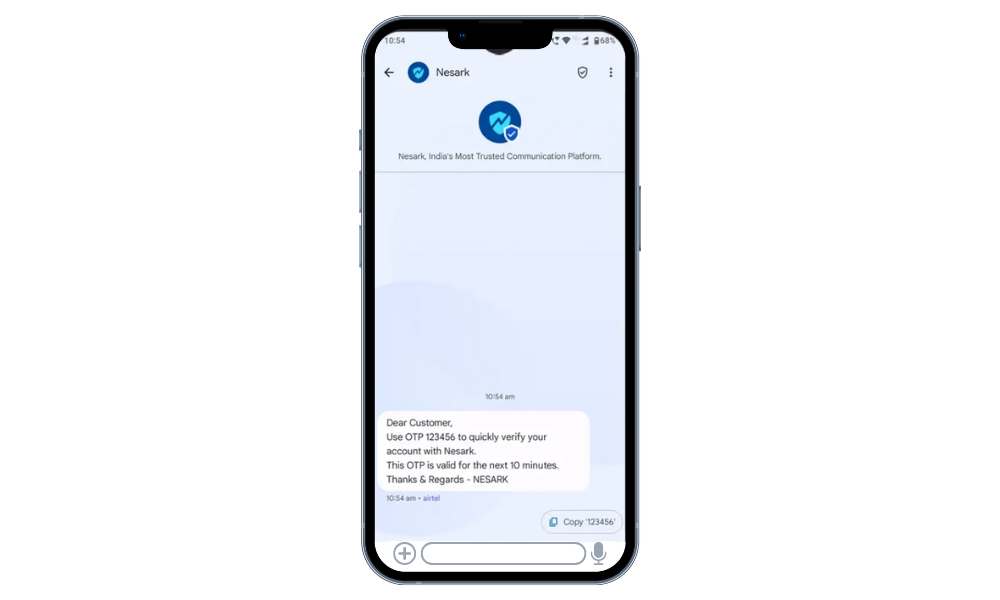
Campaigns for Promotion
RCS makes conventional promotions interactive by utilizing buttons and swipe-through carousels. You can promote direct sales, highlight special offers, and display your products. Click-through rates are raised by the visually appealing format, and consumer engagement is enhanced by the link opening in a new tab.
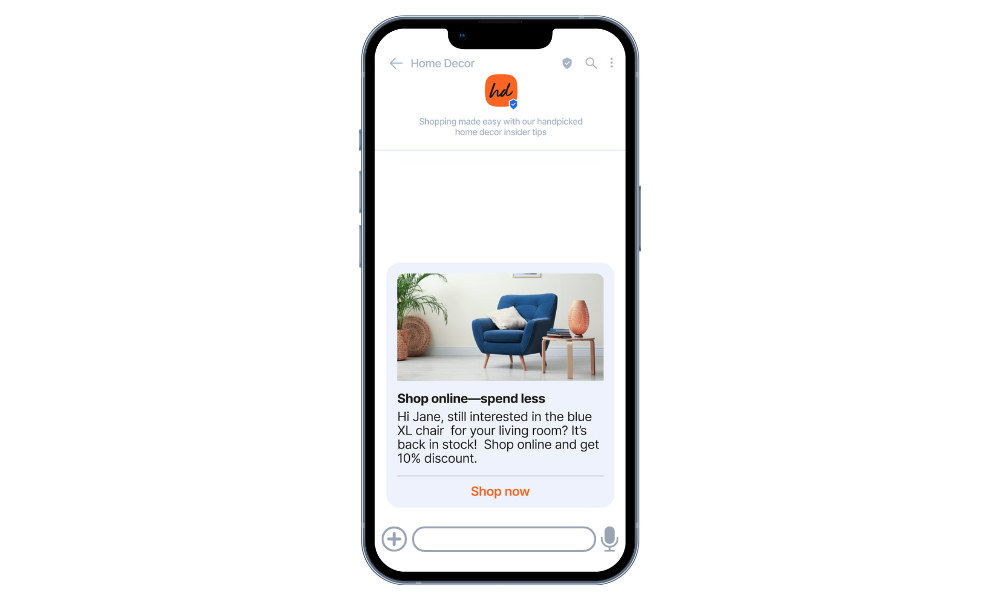
Participation in Loyalty Programs
RCS improves the launches of a brand-new loyalty program with interactive cards, special deals, and simple sign-up procedures. While QR codes facilitate simple in-store or online redemption, customers can use the chat window to redeem incentives and take advantage of promotions.
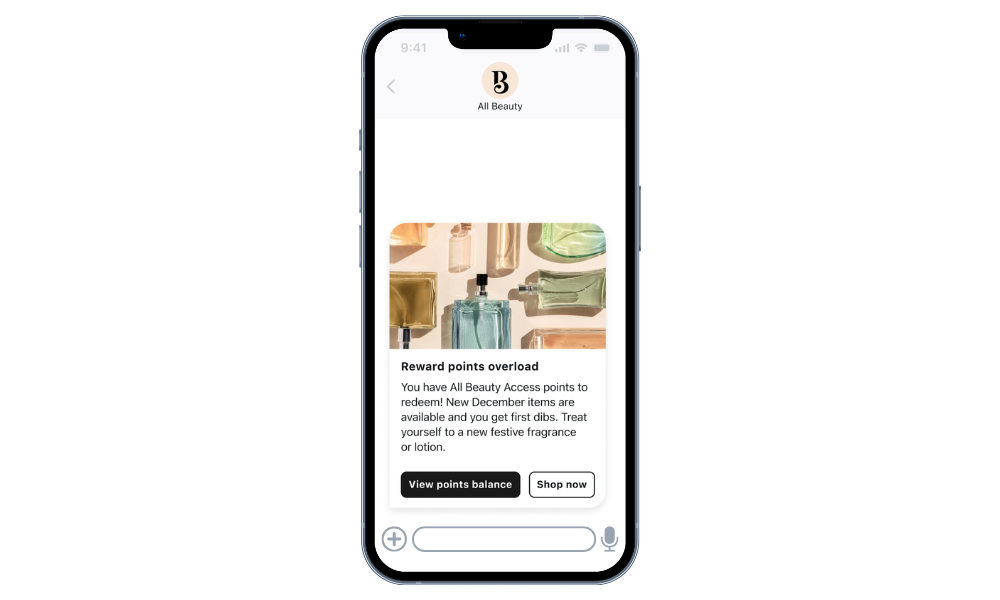
In-app Purchases
Customers can make purchases right within the conversation thanks to RCS’s integration of Google Wallet, which facilitates safe transactions. You can streamline the checkout process, lower friction, and increase conversion while guaranteeing a reliable payment experience by utilizing interactive buttons and branded text.
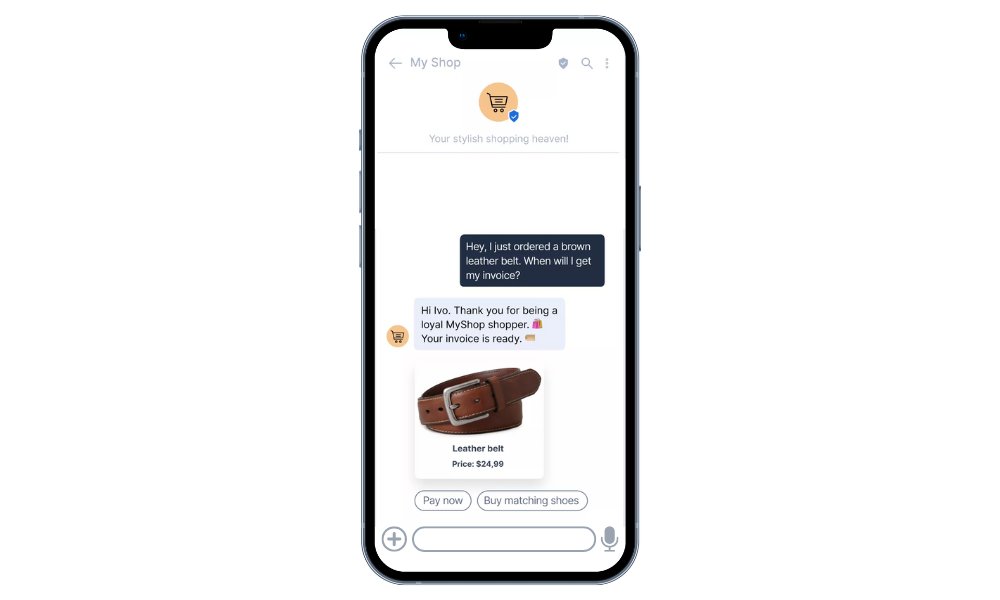
Proactive Notifications to Customers
You can send out customized alerts with RCS, including reminders about low stock, purchase updates, or subscription renewals. Rich media and actionable buttons allow clients to place orders or look at relevant offers promptly.
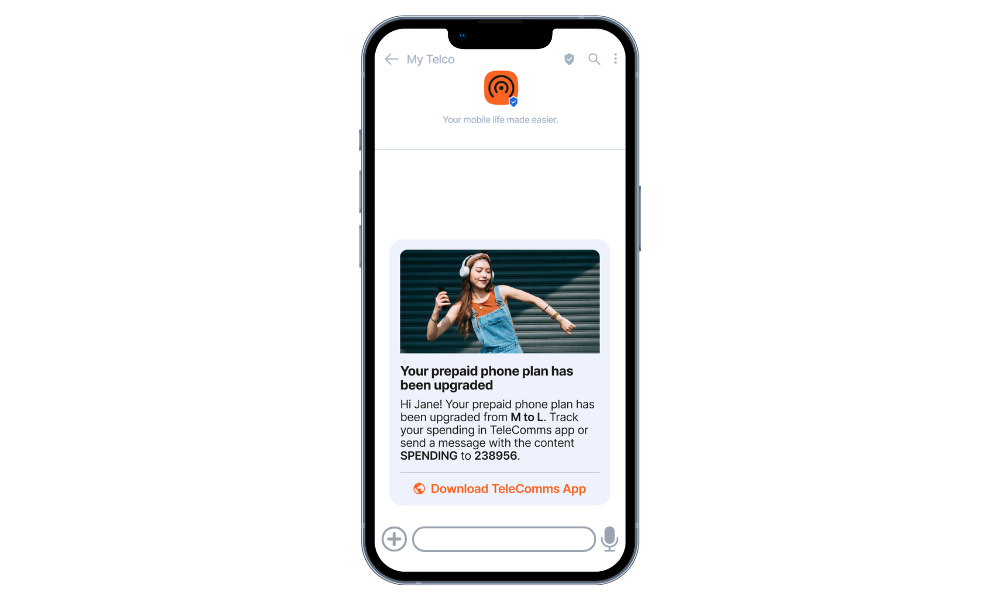
Customer Service and Cart Recovery
RCS also improves customer service. Instead of redirecting consumers to separate apps for exchanges or returns, brands can handle them directly in messaging.
For cart recovery, RCS enhances what SMS already does. Brands can present visual reminders of items left in the cart, show related recommendations, and let customers resume their shopping journey without leaving the conversation, redirecting to the website at checkout for payment.
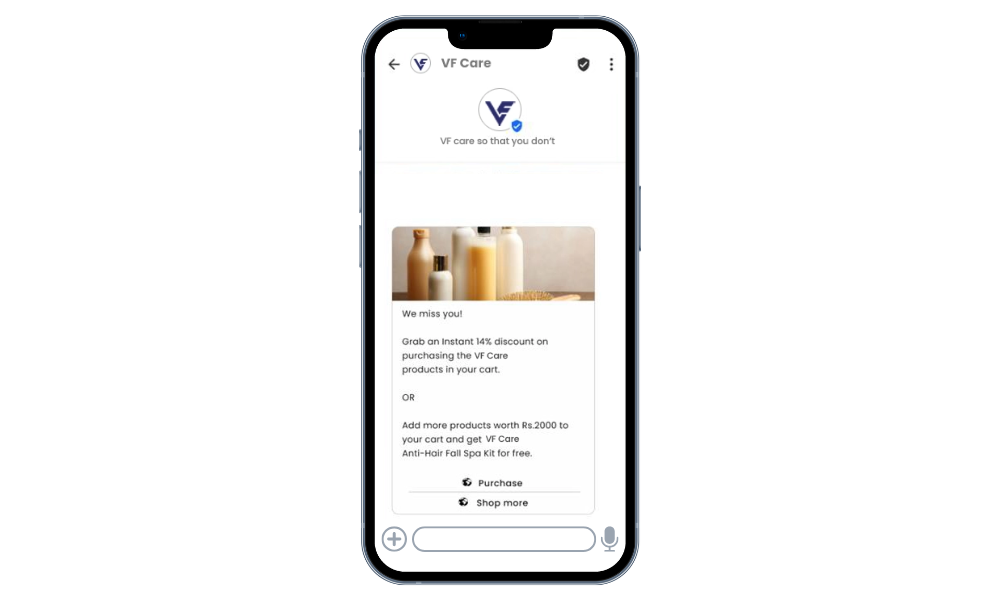
Catalogs of Products and Customized Newsletters
RCS uses dynamic, interactive messaging to distribute catalogs and customized newsletters. Consumers have the opportunity to store favorites or make a straight purchase utilizing buttons while perusing rich media material, including product descriptions and photographs. This boosts user engagement and increases conversions by fusing convenience and customisation.
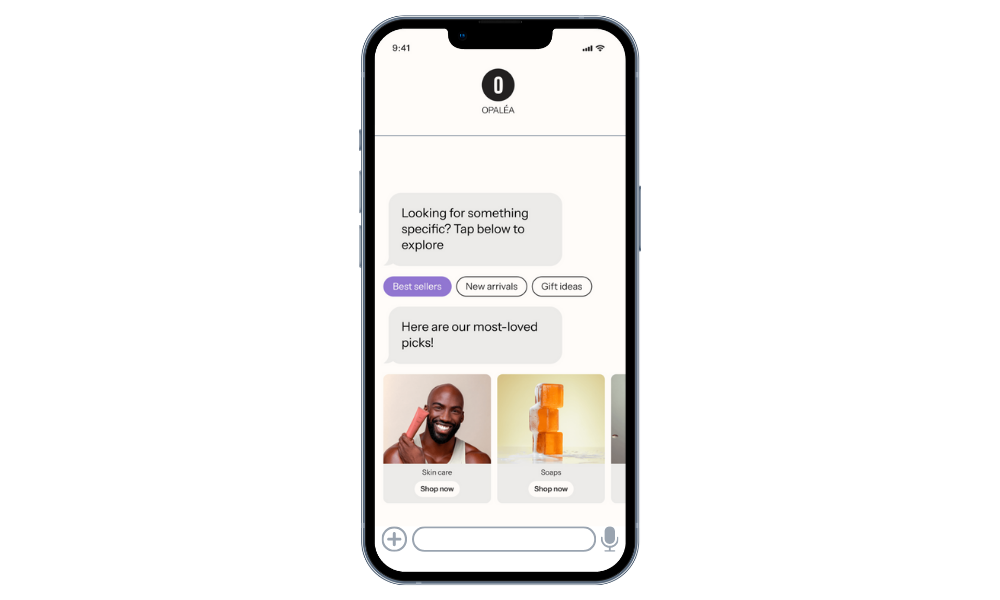
Invitations to Events and Registration
Quick-access links, linked calendars, and interactive RSVP options make event administration easier with RCS. You can use the messaging app to send visually appealing invites that let recipients store event details, confirm their attendance, or find their way to the location. Such a streamlined procedure increases user convenience and encourages participation.
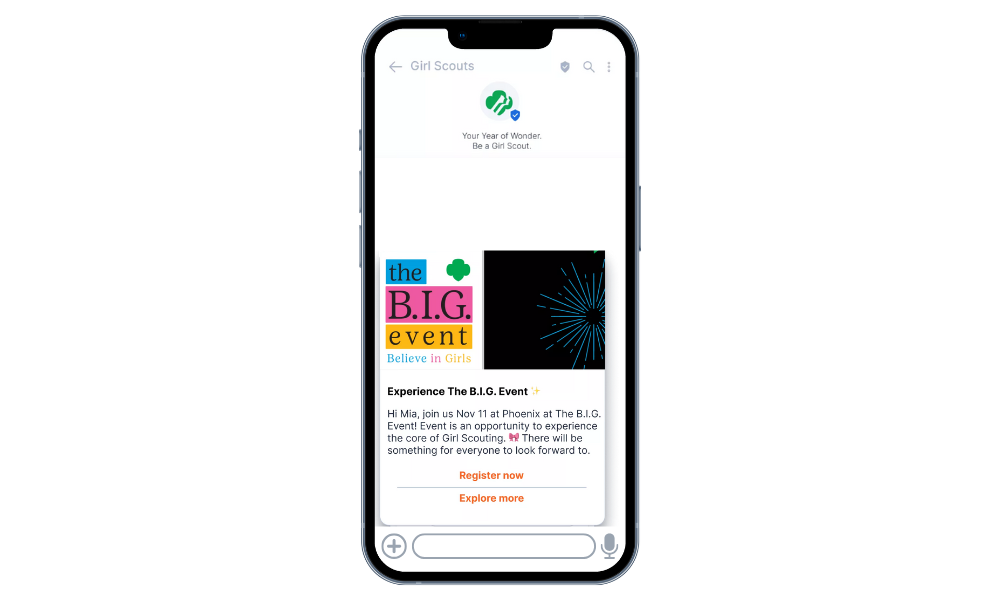
How to Implement RCS Marketing for Ecommerce Businesses
Adopting RCS messaging is easy if you have the correct plan. To begin, follow these steps:
1. Create a company profile on RCS
Sign up with a provider, finish the verification process, and add your website, logo, and company name. A validated profile increases deliverability by fostering confidence and assisting clients in quickly identifying your communications.
2. Produce powerful RCS content
Using buttons, shoppable carousels, graphics, and customized responses, go beyond just text. Simple text can still be incorporated into your communications when appropriate, but rich media makes them more captivating.
3. Evaluate and refine your strategy
Use capabilities like read receipts and click data to track interaction, start with tiny segments, and compare RCS to SMS. Make use of this information to improve content and determine the most effective formats.
4. Take regional accessibility into account
Focus on markets with significant support, like the US, UK, Germany, and important regions of Europe, as RCS adoption varies. Continue utilizing SMS in other areas, knowing that delivery is guaranteed via fallback alternatives.
What Are the Best Practices for RCS Marketing?
- Obtain permission from clients
Before sending promotional texts, RCS marketing, like SMS, requires explicit written authorization (opt-in). This increases audience trust and is mandated by law.
- Keep messages brief
Richer messaging is supported via RCS, although conciseness is still essential. Texts that are brief, understandable, and interesting elicit better reactions than ones that are lengthy and intimidating.
- Give it a visual
Make use of RCS’s capacity to distribute excellent photos, movies, and carousels. Product demonstration and engagement are enhanced by visual storytelling.
- Add a clear call to action
Customers should be guided to take action by every message. For simple, direct clicks that increase conversions, use RCS’s interactive buttons.
- Personalize your messaging
Divide up your audience and adjust your messaging to suit the tastes of each individual. Personalized texts strengthen relationships and seem more pertinent.
- Have a backup plan
Make sure you’re using a messaging platform that can enable logic between RCS-enabled and non-RCS-enabled devices. This way, you can quickly set up a fallback message that the non-enabled devices can accept if an RCS agent tries to send a message to a user who does not have an RCS-enabled device.
- Test and analyze
To determine what works, whether it’s colors, CTA design, or images, do A/B testing. Better performance is ensured by ongoing optimization.
- Consider frequency and timing
By sending communications at the right times (not too early or too late), you may show your clients that you value their time. To prevent overloading them and running the danger of opt-outs, limit the frequency.
Best RCS Marketing Campaign Examples from Real Brands
Black Friday RCS Campaign from CITADIUM
French urban apparel company Citadium used RCS to send out branded messages with interactive links that let customers go straight to particular product categories and a conspicuous 40% off site-wide sale.
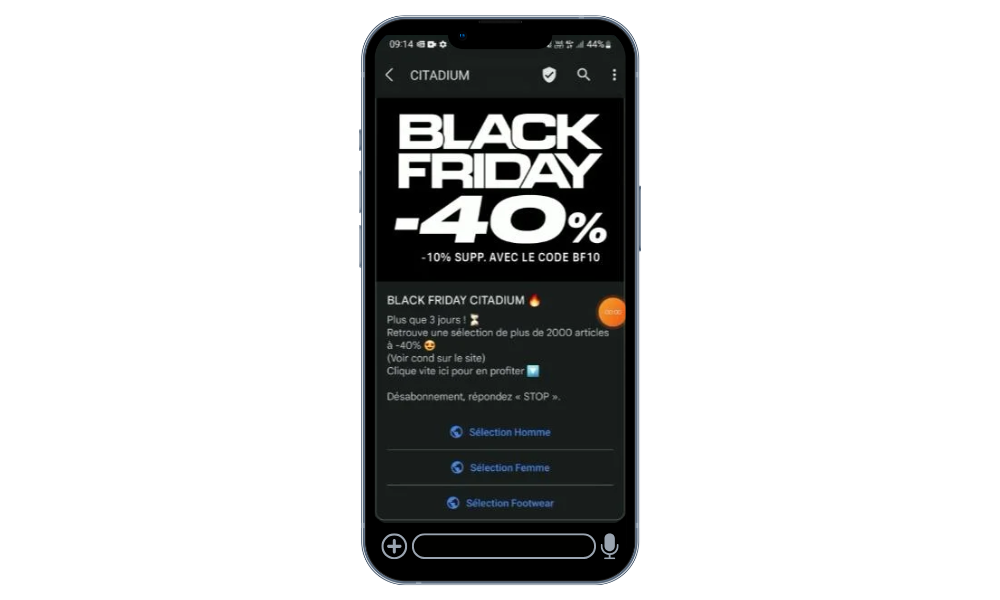
boAT’s RCS Rich Card Message
RCS’s media-rich features are being used by brands such as boAT to convey marketing messages. You can see how the rich card on this RCS campaign example includes an image of the product, a brief description, a discount, and a call to action that allows recipients to get the item right away.
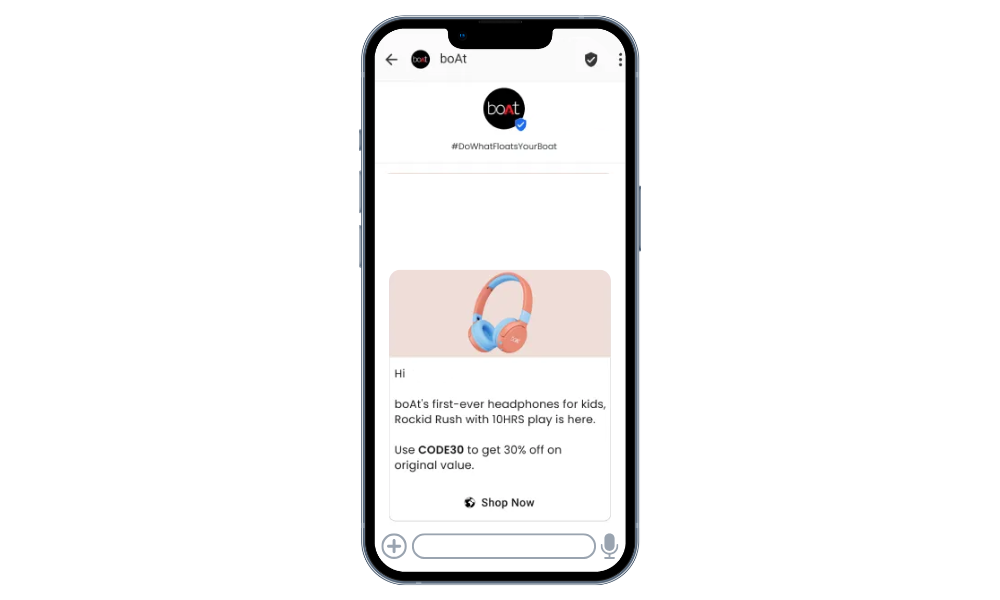
Quick Replies in Warby Parker RCS Campaigns
This recognized eyewear brand uses the capabilities of RCS messaging to improve client experience, streamline the purchasing process, and even collect data on clients’ preferences. In this campaign example, we can see that they opt for the quick reply feature to conduct a quiz on clients’ preferred eyewear models. In just one click and without the need to type, customers can choose what they like. It simplifies and quickens answering, which makes it more encouraging for clients to engage. Additionally, the brand can then use the collected information for personalized product suggestions.
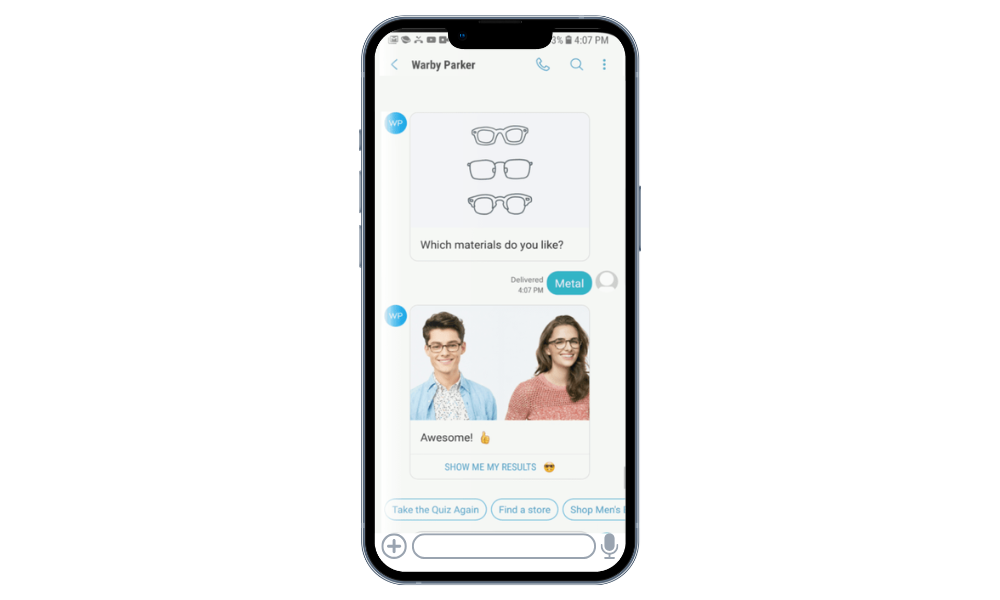
Final Thoughts
RCS isn’t just another messaging channel; it’s a major shift in mobile communication. It’s about delighting customers and enabling personalization at scale. RCS marketing enables companies to create positive experiences that motivate action, convey messages that customers can trust, and meet them where they are. It supports the whole customer journey from their initial purchase onward in a way that is interactive, branded, and results-driven.
Not sure where to start with implementing this technology in your marketing strategy? Contact Flowium for more information and professional advice.
FAQ
- Can RCS replace email marketing?
No, RCS won’t take the place of email anytime soon, since, according to many polls, most generations still prefer email (40-50%), and almost everyone has an email address, unlike RCS. Brands should see RCS marketing as an additional channel in their omnichannel approach. So don’t worry about your investments in email marketing services.
- Will RCS marketing take the place of SMS?
Yes, RCS may eventually take the place of SMS and MMS, most likely within the next three to five years. RCS should simply become the standard method for sending and receiving text messages. Just like we don’t actually call it SMS these days, we won’t call it RCS either. Only texting will be used.
- Is there a difference between RCS marketing campaigns on Android and iOS?
While RCS works on both Android and iOS, the visuals differ slightly. The good news is that all RCS functions are compatible with both systems, notwithstanding minor differences. The buttons, images, and interactions all function the same way regardless of which phone your customer uses.
